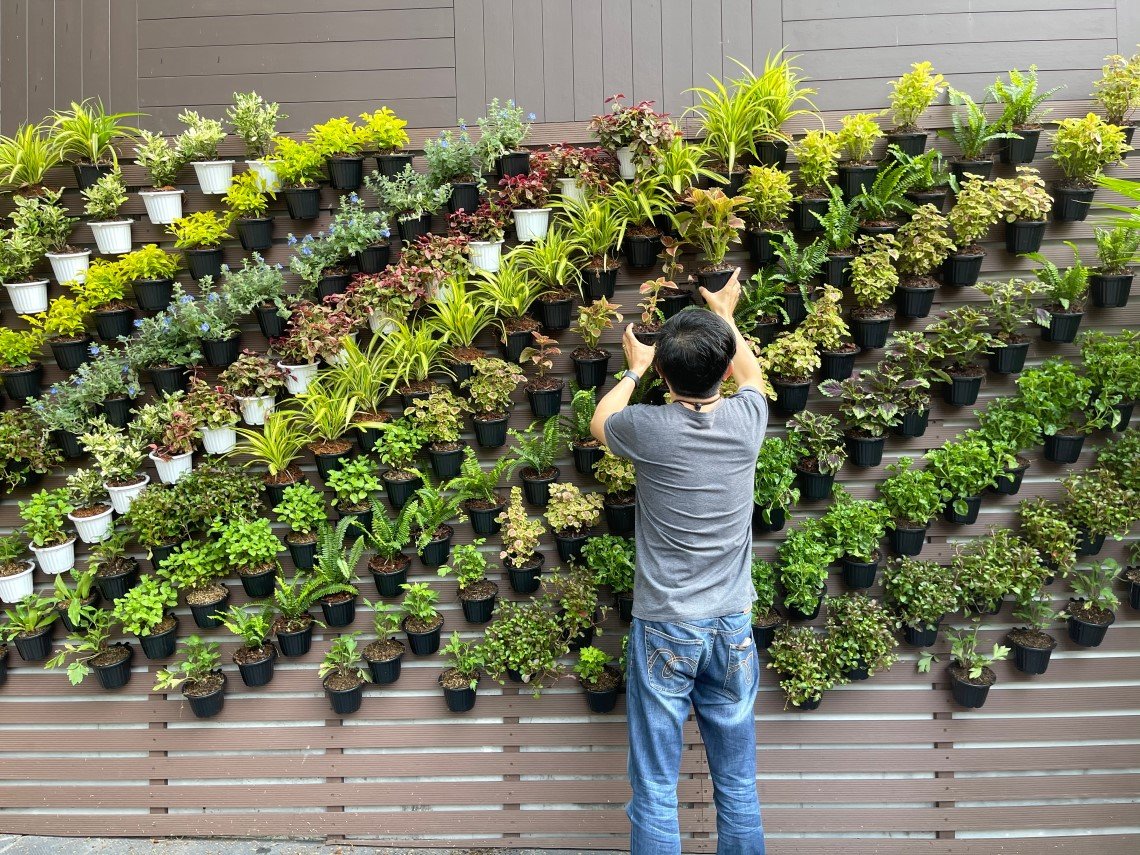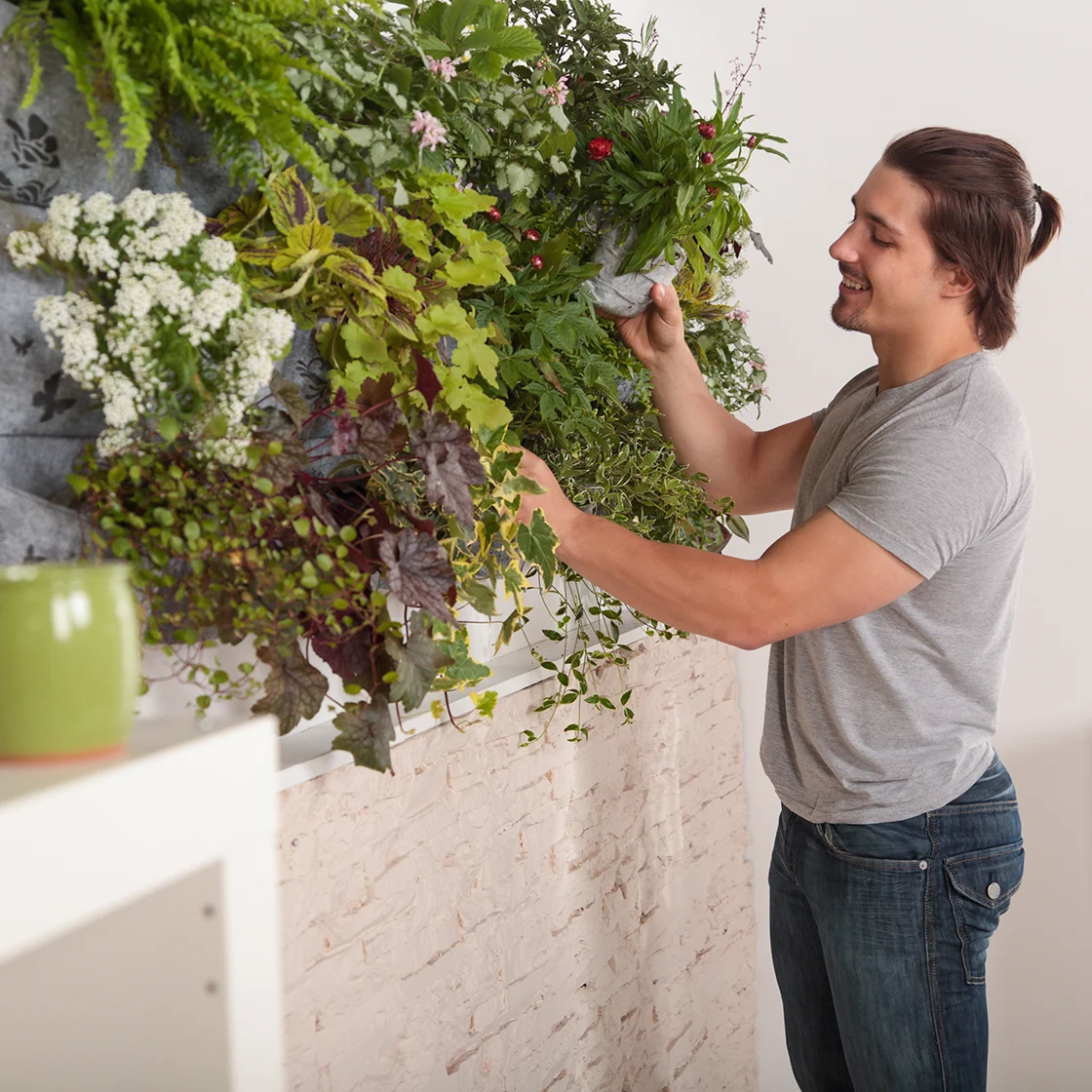
By Bryan Meador
A Comprehensive Guide to Vertical Gardening
Introduction
Embark on the journey of vertical gardening, an innovative method that transforms ordinary indoor and outdoor walls into lively, green canvases. Vertical gardening, also known as living walls, has gained significant traction recently, thanks to its countless psychological and physical benefits, as well as its aesthetic appeal. This guide provides an in-depth look at vertical gardening, ensuring you're well-equipped to start your own, be it indoors or outside.
Hanging Plants on a Wall

1. Select the Right Wall: The first step involves choosing the perfect wall, which could be indoors or outdoors. For indoor gardens, select a wall close to a window or under artificial grow lights, while for outdoor gardens, a wall that gets plenty of sunlight is ideal.
The success of your vertical garden largely depends on the wall you choose. Identify a wall that receives a good amount of light – it could be natural sunlight or artificial grow lights. However, the amount of light needed will also depend on the type of plants you select. If you're opting for shade-loving plants, a bright window may not be necessary. Additionally, consider the wall's proximity to a water source for easy maintenance.
2. Prepare the Wall: Indoor and outdoor walls have different preparation needs. For indoor walls, consider using a backing board or waterproof paint to protect against moisture damage. For outdoor walls, ensure the wall can withstand weather conditions and the added weight of the planters.
3. Choose the Right Planters: For vertical gardening, the choice of planters is pivotal. We recommend using recycled plastic planters. They are lightweight, making them easier to hang and safer for your walls. Plus, they're durable and perfect for the long-term growth of your plants. More importantly, using recycled plastic planters is a great way to contribute to environmental sustainability. These are our favorites.
4. Install the Planters: Installation involves drilling holes into the wall and securing the planter with screws and wall plugs. Ensure the planters are securely fastened and the wall's load-bearing capacity isn't exceeded. This video has been really helpful in our mounting and hanging.
Choosing the Right Plants

1. Size: Opt for plants that won't outgrow their space, whether it's an indoor or outdoor vertical garden. Enough room should be provided for every plant to grow without crowding each other.
2. Light Requirements: Match your plant's light needs to the light exposure of your selected wall. There are plenty of plants suitable for both low-light indoor conditions and full-sun outdoor conditions.
3. Water Requirements: Choose plants with similar watering needs. This is especially important for outdoor vertical gardens, which may need to withstand variable weather conditions.
4. Maintenance: Some plants require more maintenance than others. If you're a busy person, you might want to choose plants that require minimal care. Some plants ideal for vertical gardening include English Ivy, Philodendron, Pothos, Spider Plant, Ferns, and Succulents. These plants are known for their resilience and relatively low maintenance needs.
Arranging Planters on a Wall

1. Consider Color and Texture: A visually appealing garden, whether indoors or outdoors, will feature a variety of colors, shapes, and textures.
2. Plan According to Plant Size: Place larger plants at the top and smaller ones at the bottom. This rule applies to both indoor and outdoor gardens to ensure equal light distribution.
3. Create a Pattern or Go Random: You could arrange your planters in patterns or randomly. This freedom of design applies to both indoor and outdoor gardens, allowing you to create the garden that best fits your aesthetic.
4. Accessibility for Care: Place planters where they can be easily accessed for watering, pruning, and general plant care. This is especially important for larger outdoor gardens where accessibility could be a challenge.
The Benefits of Indoor and Outdoor Plants

1. Improved Air Quality: One of the primary benefits of indoor plants is their ability to purify the air. Plants absorb carbon dioxide and release oxygen, contributing to a healthier living environment. Additionally, some plants can filter out harmful toxins present in the air.
2. Increased Humidity: By releasing moisture into the air, plants naturally increase the humidity in your space. This can be particularly beneficial in dry climates or during winter when the air tends to be drier.
3. Reduced Stress Levels: Research shows that being in the presence of plants can lower stress and anxiety levels, promoting a sense of wellbeing. The vibrant green color of plants has a calming effect, making them a natural mood enhancer.
4. Improved Focus and Productivity: Indoor plants can boost concentration and productivity, while the sight of a beautiful outdoor vertical garden can offer inspiration and motivation.
5. Aesthetic Appeal: Last but not least, a well-arranged wall of plants, whether indoors or outdoors, is simply beautiful and can significantly enhance your space.
Conclusion
Vertical gardening, both indoors and outdoors, is a creative, sustainable, and beneficial activity. The use of recycled plastic planters makes it environmentally friendly, and the plants provide a wealth of benefits. Start creating your vertical garden today and witness the transformation of your space!
